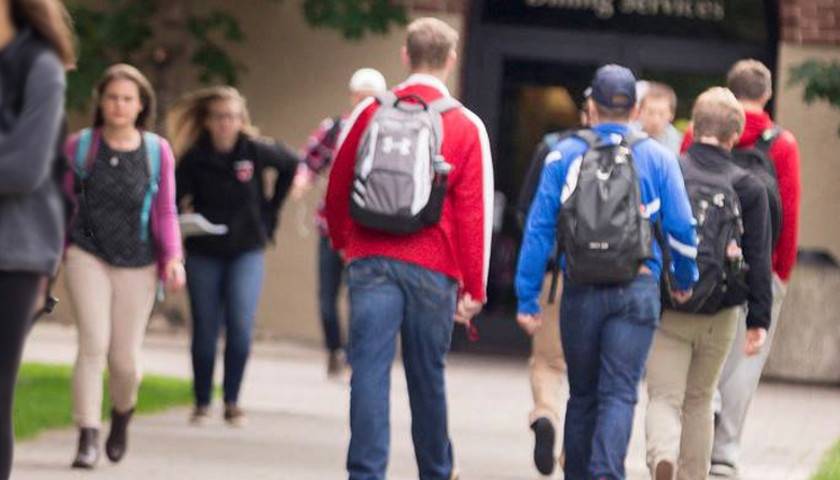by Terrance Kible
Two affiliated Catholic colleges in Minnesota adopted a policy for the new academic year allowing “non-binary, gender-fluid, and gender-nonconforming individuals” to enroll in a men’s or women’s college based on the sex with which they identify.
The colleges’ previous policy only explicitly referred to “transgender” students, except in a “frequently asked question” that noted non-binary students must “consistently live and identify” as either a man or a woman.
The revision contrasts with the definition of “non-binary” used in the “Queer Glossary” provided by the institutions’ LGBT student union, the Queer Proud Lavender Union for Students.
The Queer Glossary defines “non-binary” as “a continuum or spectrum of gender identities and expressions, often based on the rejection of the gender binary’s assumption that gender is strictly” man or woman.
Female-identifying males can attend the College of Saint Benedict for Women, and male-identifying females may enroll at Saint John’s University for Men, according to the new policy.
The institutions framed the new guidelines, updated last month, in terms of their historic “commitment to respecting the dignity of all persons” as informed by the institutions’ “evolving understanding of gender and gender identity.”
“This policy defies the teaching of the Catholic Church (and basic biology) that we are embodied as male and female,” ethicist Nathanael Blake of the Ethics & Public Policy Center told The College Fix.
“In place of this ancient truth,” Blake continued, “these schools have substituted the superstition of gender ideology, which posits that it is somehow possible to be born into the wrong body.”
As their names suggest, these institutions were single-sex institutions before the new policy. Now, the institutions allow “transgender, non-binary, gender-fluid, and gender-nonconforming individuals to matriculate and thrive” at the institution corresponding to the sex with which they “now consistently live and identify,” the policy stated.
Applicants to the College of Saint Benedict, for example, are eligible to attend the previously women-only college if “assigned male . . . at birth but now consistently liv[ing] and identify[ing] as female, transgender, gender fluid or nonbinary.”
Assigned male at birth, or AMAB, is a term used “to disrupt the gender binary model” and “serves to remind that gender was arbitrarily based on genitalia at birth,” according to the Queer Glossary provided by the institutions’ LGBT student union, the Queer Proud Lavender Union for Students.
According to the Frequently Asked Questions for the new policy, “all applicants must identify themselves as a man or a woman, and their application materials must support their self-identification.”
“Applicants who are concerned about discrepancies in their application materials are encouraged to speak with an admission counselor or to address their concerns in an essay or personal statement,” the FAQs continued.
The Fix asked Blake how Catholic institutions can go about “respecting the dignity of all persons and . . . welcoming students” while remaining faithful to Catholic teaching on sexuality and gender.
“The best way for Catholic and other Christian institutions to respect the dignity of human persons, including those who identify as transgender, is by proclaiming the truth of our embodiment,” Blake said.
Institutions should also respond by “compassionately counselling and ministering to those who are uncomfortable with their natural bodies so that they may accept themselves for who they really are as male and female,” he continued.
On July 31 and August 3, The Fix reached out via email to the institutions for clarification on the policy and to the Diocese of Saint Cloud and the United States Conference of Catholic Bishops to ask whether the policy comports with Catholic teaching on sexuality and gender. It has not received a response.
– – –
Terrance Kible is a reporter at The College Fix.
Photo “Campus Life at College of Saint Benedict and Saint John’s University” by College of Saint Benedict and Saint John’s University.




